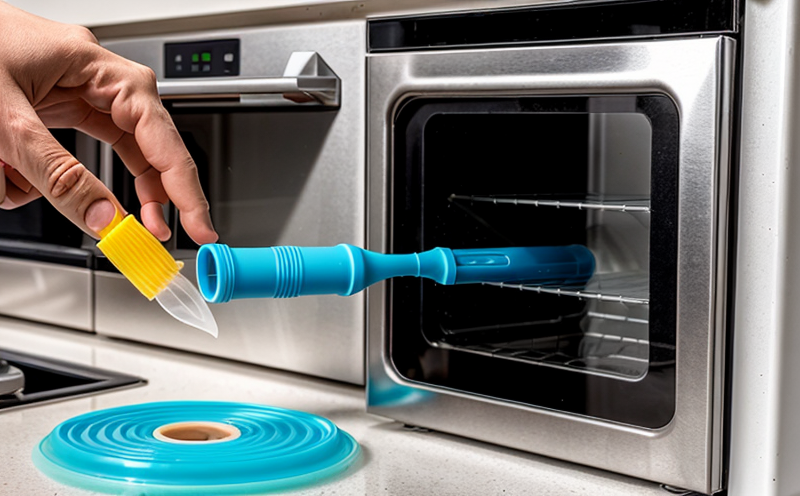ISO 4593 Household Plastics Thickness Measurement Testing
The ISO 4593 household plastics thickness measurement test is a critical procedure used to ensure that plastic products meet the required specifications for thickness, which is essential in quality control and compliance. This standard provides precise guidelines on how to measure the thickness of plastics commonly found in household items such as containers, packaging materials, and appliances.
The primary purpose of this testing method is to verify that the material used meets the desired thickness standards set by the manufacturer or regulatory bodies. Thickness can significantly impact the product's performance, durability, and safety. For instance, thinner plastic may result in reduced strength and higher brittleness, while thicker plastic could lead to increased weight and potentially decreased efficiency.
To perform this test, samples are taken from the plastic items using appropriate tools such as micrometers or calipers. The sample should be representative of the entire product batch to ensure accurate results. After selecting the sample, it is measured at multiple points across its surface to obtain an average thickness value. This approach helps in identifying any variations within the batch and ensures uniformity.
The measurement process must adhere strictly to ISO 4593 standards. These guidelines specify precise methods for positioning the measuring device on the sample, ensuring accurate readings. Compliance with these procedures guarantees reliable data that can be used effectively during quality assurance processes or when submitting compliance reports.
Understanding why this test is important involves considering both regulatory requirements and practical implications for manufacturers and consumers alike. Regulatory bodies often require adherence to specific thickness limits to protect public health and safety, especially in cases involving food contact surfaces or other high-risk applications.
Manufacturers benefit greatly from conducting ISO 4593 household plastics thickness measurement tests because it allows them to maintain consistent product quality throughout production runs. By regularly monitoring the thickness of their products, they can identify potential issues early on and make necessary adjustments before large-scale defects arise.
Consumers also reap benefits when manufacturers follow this testing protocol closely. Ensuring that household plastics meet specified thickness requirements enhances overall safety and reliability for end-users. It reduces the risk of accidents caused by compromised structural integrity or unexpected breakage due to improper manufacturing practices.
Why Choose This Test
Selecting ISO 4593 household plastics thickness measurement testing offers several advantages over other alternatives. Firstly, this method provides a standardized approach that ensures consistency across different laboratories and test facilities worldwide. This standardization is crucial for maintaining reliable results which can be compared accurately between various entities involved in the supply chain.
Secondly, using ISO 4593 helps businesses stay compliant with international regulations governing plastic products. Many countries have strict rules about the thickness of certain types of plastics used in consumer goods like containers or packaging materials. By adhering to these standards through proper testing methods, companies can avoid penalties associated with non-compliance.
Thirdly, adopting ISO 4593 enhances a company’s reputation among customers and stakeholders by demonstrating commitment to quality assurance processes. It shows that the organization values its products' safety and performance above all else, which builds trust between the business and those who rely on it for purchasing decisions.
- Ensures Consistency: Standardized procedures lead to uniform results across different labs.
- Compliance with Regulations: Helps businesses meet national and international standards easily.
- Better Reputation: Demonstrates dedication to quality assurance, gaining customer confidence.
In summary, choosing ISO 4593 household plastics thickness measurement testing is beneficial for its reliability, regulatory compliance, and enhanced reputation. These factors contribute significantly towards achieving long-term success in the industry.
Customer Impact and Satisfaction
The implementation of ISO 4593 household plastics thickness measurement tests has a direct impact on customer satisfaction by ensuring that products meet the expected quality levels. Consumers appreciate items that are safe, durable, and perform well over time. When manufacturers follow rigorous testing protocols like ISO 4593, they demonstrate their commitment to delivering high-quality goods which ultimately leads to increased customer loyalty.
Moreover, these tests help reduce complaints from customers regarding defective products or those falling short of advertised specifications. By identifying potential issues early in the manufacturing process through thorough thickness measurement checks, businesses can address them proactively rather than after a product has been released into circulation.
The use of ISO 4593 also contributes positively to environmental sustainability efforts by promoting efficient use of raw materials during production processes. Manufacturers who adhere strictly to these standards tend to produce thinner but equally strong products, thus minimizing waste and reducing resource consumption.
Overall, incorporating ISO 4593 household plastics thickness measurement tests into a company’s quality assurance program fosters customer satisfaction while contributing towards sustainable practices within the industry.





